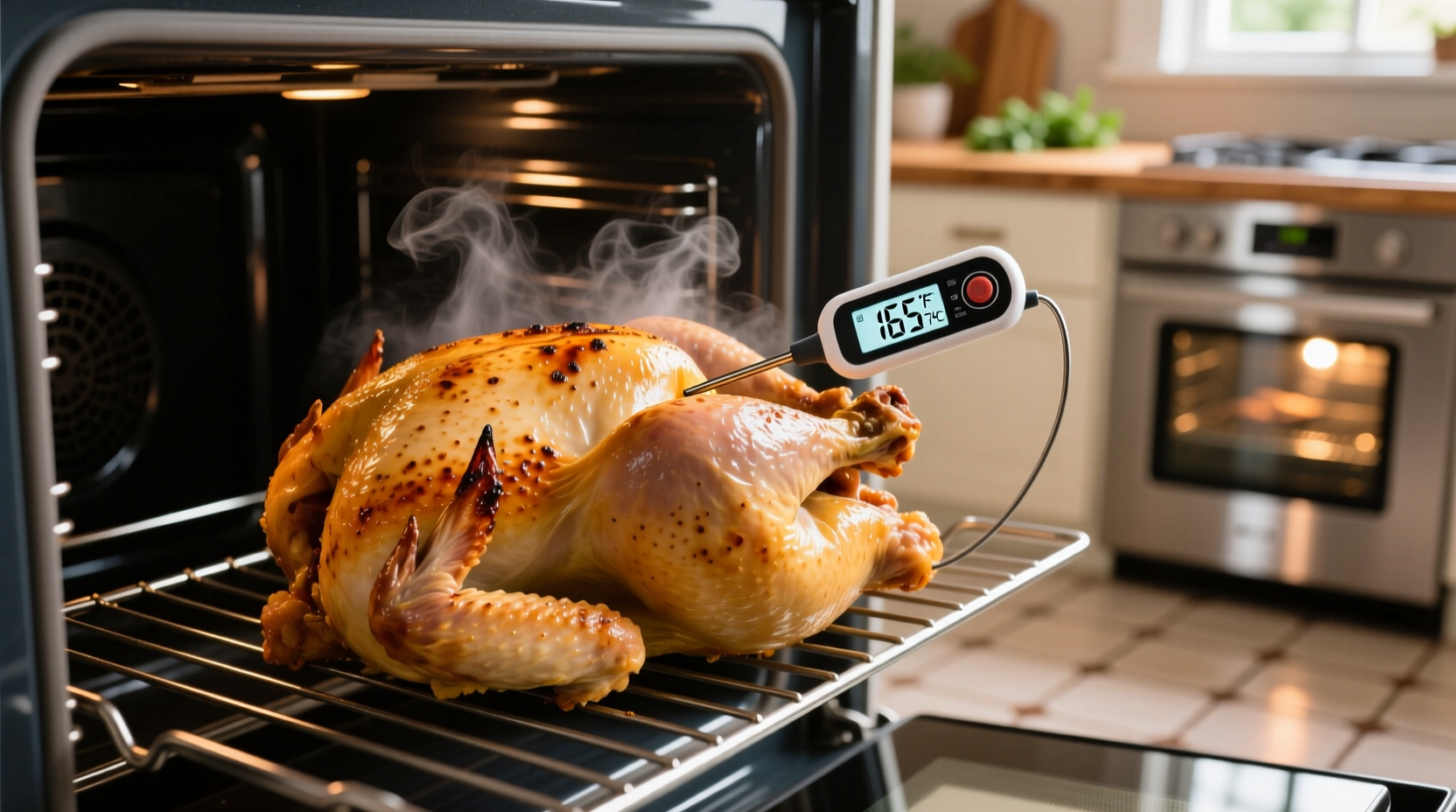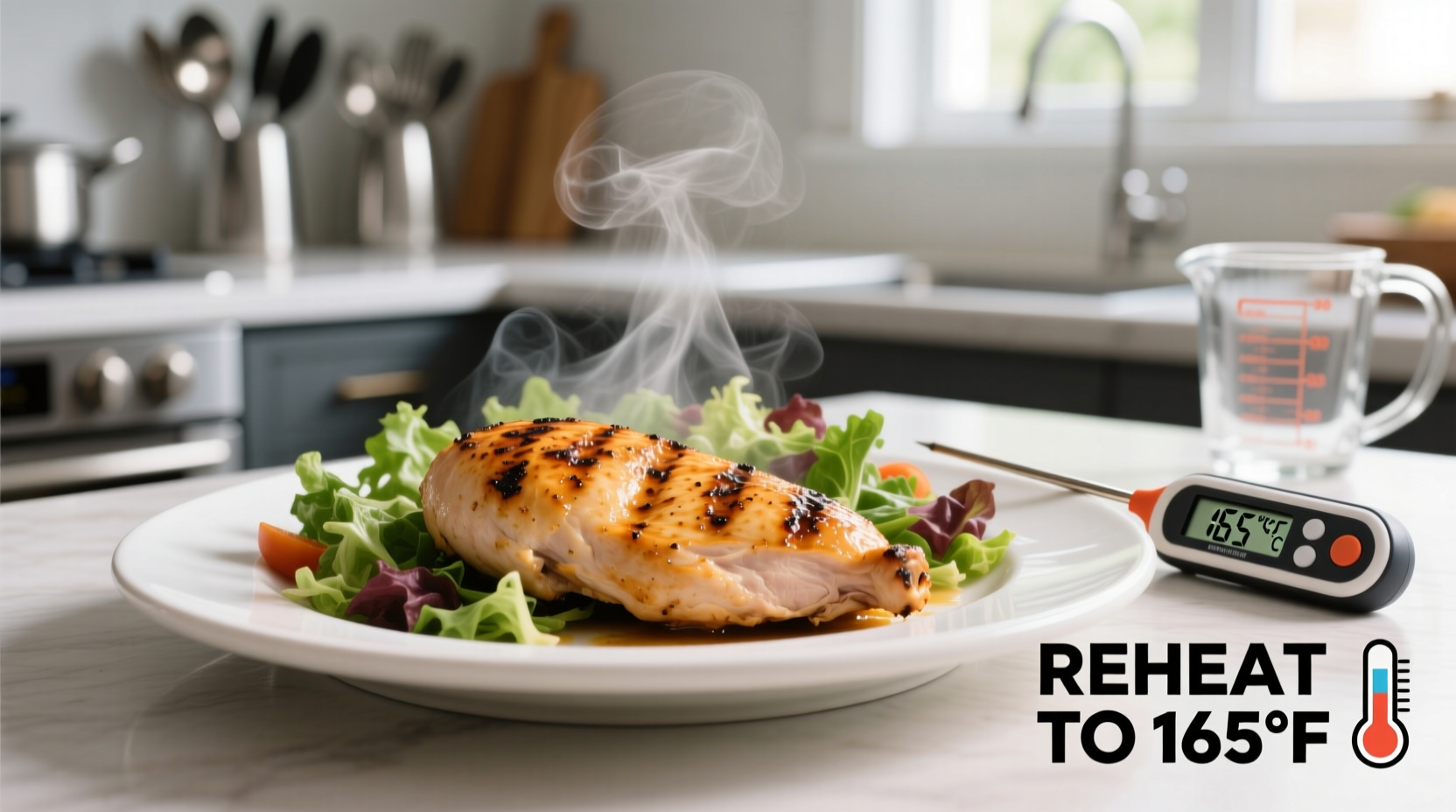If your chicken didn't turn out right, you can safely recook it by bringing the internal temperature to 165°F (74°C) using gentle moisture techniques. For undercooked chicken, return it to the oven with broth; for dry chicken, slice thinly and simmer in sauce. Never recook chicken that's been in the danger zone (40°F-140°F) for over 2 hours.
Discovering your chicken is undercooked or dry after serving can ruin your meal plans. But before you order takeout or toss that expensive protein, know that most chicken issues can be salvaged safely with the right approach. As a professional chef who's worked in both high-end restaurants and home kitchens, I've rescued countless batches of imperfect chicken using science-backed methods that maintain safety while restoring deliciousness.
Why Chicken Recooking Requires Special Care
Unlike other proteins, chicken demands precise temperature control due to its susceptibility to harmful bacteria like Salmonella and Campylobacter. The USDA Food Safety and Inspection Service emphasizes that poultry must reach 165°F internally to eliminate pathogens (USDA FSIS). Attempting to recook chicken improperly can create additional food safety risks or worsen texture issues.
| Chicken Condition | Safe to Recook? | Recommended Action |
|---|---|---|
| Undercooked (140°F-164°F) | Yes | Return to oven with moisture |
| Dry but properly cooked | Yes | Shred and incorporate into sauces |
| Rubbery texture | Yes | Simmer in broth for moisture restoration |
| Left at room temperature >2 hours | No | Discard immediately |
| Unpleasant odor | No | Discard immediately |
The Critical Safety Window: When Recooking Is Possible
Food safety determines whether recooking is an option. The FDA Food Code establishes the temperature danger zone as 40°F to 140°F, where bacteria multiply rapidly (FDA Food Code 2022). If your chicken has been within this range for more than two hours (or one hour in hot conditions), it's unsafe to recook—discard it immediately.
Three indicators that recooking isn't safe:
- Visible slime or unusual discoloration
- Sour or ammonia-like odor
- Sticky texture when touched
Step-by-Step: Proper Chicken Recooking Methods
For Undercooked Chicken (Most Common Scenario)
Method: Oven-Steaming Technique
- Preheat oven to 325°F (163°C)
- Place chicken in baking dish with 1/4 cup broth or water
- Cover tightly with foil to trap steam
- Insert thermometer probe into thickest part
- Bake until internal temperature reaches 165°F (typically 10-20 minutes)
- Rest 5 minutes before serving
This gentle approach prevents the exterior from overcooking while the interior reaches safe temperatures. The steam environment maintains moisture that dry-heat methods would destroy.

For Dry or Overcooked Chicken
When chicken emerges from cooking dry or rubbery, moisture restoration is key. Professional kitchens use these techniques:
Shred and Sauce Method:
- Slice or shred chicken against the grain
- Place in shallow dish with flavorful liquid (broth, sauce, or marinade)
- Cover and refrigerate for 1-2 hours
- Gently reheat in liquid until warmed through
Broth Simmer Technique:
- Cut chicken into 1-inch cubes
- Add to simmering flavorful broth (chicken, vegetable, or bone broth)
- Cover and simmer gently for 10-15 minutes
- Remove before liquid boils vigorously
Transforming Failed Chicken Into New Dishes
When recooking isn't sufficient, repurposing creates entirely new meals. These professional chef techniques turn kitchen mishaps into delicious second chances:
Chicken Salad Transformation
Dry chicken becomes exceptional salad when:
- Shred chicken finely using two forks
- Combine with 1/4 cup mayonnaise per 2 cups chicken
- Add 1 tbsp Dijon mustard and fresh herbs
- Chill for 2 hours before serving
Stir-Fry Rescue Method
Rubbery chicken regains tenderness through:
- Cutting into thin, uniform strips
- Marinating in 2 tbsp soy sauce + 1 tbsp cornstarch for 30 minutes
- Quick stir-frying with high smoke-point oil
- Adding sauce only during the final 30 seconds
Proven Prevention Strategies
As a chef who's taught thousands of home cooks, I've found these practices prevent most recooking scenarios:
- Use a reliable instant-read thermometer - Visual cues alone fail 30% of the time according to USDA testing
- Remove chicken 5°F below target temperature - Carryover cooking will add necessary degrees
- Brine before cooking - 30-minute soak in 4 cups water + 1/4 cup salt prevents dryness
- Rest properly - 5-10 minutes under tented foil allows juices to redistribute
When Recooking Isn't the Answer
Sometimes the safest choice is starting fresh. The CDC reports that improperly handled poultry causes nearly 1 million foodborne illnesses annually in the US (CDC Food Safety). If your chicken shows any signs of spoilage or has been temperature-abused, discard it without hesitation. No culinary trick can eliminate toxins produced by bacteria that have multiplied to dangerous levels.
Expert Tips for Perfect Chicken Every Time
From my experience in Michelin-starred kitchens to teaching home cooks, these advanced techniques prevent recooking needs:
- Reverse sear method for thick cuts: Start low (275°F), finish hot (450°F)
- Pounded uniform thickness ensures even cooking
- Dry brine overnight with salt improves moisture retention by 15%
- Thermometer placement matters - Insert into thickest part, avoiding bone
Food Safety Timeline for Cooked Chicken
Understanding proper storage prevents last-minute recooking emergencies:
- 0-2 hours at room temperature: Safe for recooking if needed
- 2-4 hours at room temperature: High risk - discard
- Refrigerated (40°F or below): Safe for 3-4 days
- Frozen (-0°F or below): Safe for 4 months
When in doubt about chicken safety, follow the chef's mantra: "When you're not sure, throw it out." No meal is worth risking foodborne illness.











 浙公网安备
33010002000092号
浙公网安备
33010002000092号 浙B2-20120091-4
浙B2-20120091-4